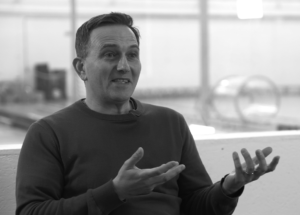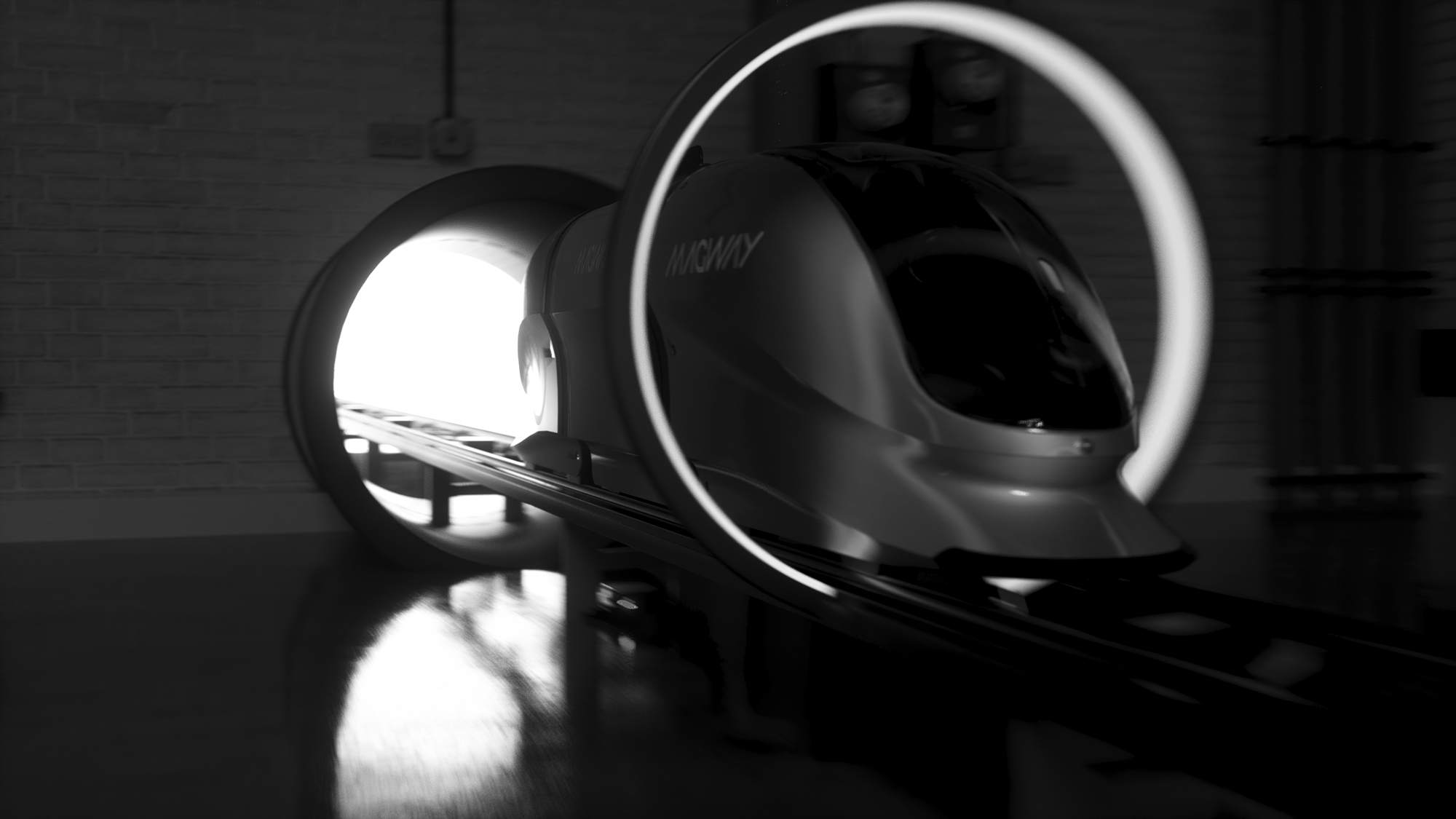Introduction, by Nicolas Bosetti, Head of Data and Insight, Centre for London

Today it’s rather uncontroversial to say that the way we move around impacts our health, and our environment. Cars, vans, and lorries generate air pollution, which causes thousands of deaths every year, while carbon emissions from fossil fuels make an enormous contribution to climate change. Traffic also makes our streets less safe and pleasant for walking, cycling, or simply spending time in. This in turn can lead people to drive more, making the problem worse.
The numbers are shocking. 25 per cent of London’s carbon emissions come from the transport of people and goods. Three quarters of these come from road transport. The contribution that car traffic makes to air pollution is even greater half of air pollution comes from road traffic.
Despite rising awareness of these issues, we’ve been slow to change. The number of road miles travelled by private cars, taxis, and vans in the capital have been increasing since 2011-2012. We are buying bigger, heavier cars, and more diesel vans, offsetting any benefits from greater fuel efficiency.
The Mayor of London and the government have set ambitious goals to respond to the climate emergency and air pollution crisis. Meeting these targets will need London to achieve a huge amount of change in just a few years. But the ideas our contributors have put forward would go a long way to help us make the shift. E-bikes and e-scooters have the potential to become a convenient and affordable alternative to the car for some of our shorter trips, if only we make their use easier and safer. Making the city a much better place to walk or cycle will also support Londoners who are currently hesitant to make the shift. And bold ideas for freight will be crucial as demand for personal deliveries booms.
Moments of rapid change can feel messy and difficult, yet the vision our contributors set out for the city is compelling. Politicians can reassure Londoners that these innovations will make London a better place to live by increasing life expectancy for all Londoners and particularly the children who grow up here. It’s our chance to make real progress towards combatting climate change, and at the same time creating very local benefits – more pleasant streets to live on, and more opportunities to be active.
Nicolas is Head of Data and Insight at Centre for London. He joined the Centre in 2015 and has co-authored research on housing and inequality, opposition to housing developments, regional governance, the management of public spaces, lighting and future mobility.
Creating a (private) car-free London, by Hirra Khan Adeogun

For too long, we’ve taken for granted that pollution and congestion are just a part of London life. But the coronavirus pandemic and the warnings from the IPCC that humanity is now in “code red” have forced us to rethink. We need to drastically reduce our car use to reach climate targets and create a healthy, thriving (private) car-free London for everyone. Just one in 10 residents of inner London boroughs still travel to work by car, and the Mayor’s Transport Strategy aims to increase sustainable modal share here to 90 per cent by 2041.
There’s a lot that needs to happen to make this vision a reality, but here’s my top three priorities.
- A smart road user charging scheme to reduce congestion, toxic air and emissions by disincentivising driving, and encouraging people to take more sustainable alternatives. Currently, motorists stutter through London at just seven miles per hour – it’s disastrous for our health, and a waste of time and precious resources. Instead, we need a comprehensive scheme that accounts for vehicle metrics (e.g., emissions, size, and weight), road categorisations, changing congestion levels, and public transport access levels in the local area. Importantly, Possible wants to see a progressive tax that charges the wealthiest and those driving the most polluting vehicles more, with any money raised invested into public transport.
- Buses need to be cheaper, more reliable, more convenient, and fully electric. Congestion has been slowing average London bus speeds for some time, and as part of this government’s latest funding agreement with Transport for London, bus services are due to be reduced and are vulnerable to further cuts. Even a small drop in bus frequencies penalises London’s poorest and most marginalised residents as they are more likely to rely on buses, pushing people towards personal car ownership.
- Most roads in London – even minor roads – should rapidly prioritise space for protected cycleways over parked cars that sit unused for over 95 per cent of the time. Cycling is crucial to achieving our net-zero targets and safer cycle routes have the biggest impact in encouraging cycling. Will Norman, London’s Walking and Cycling Commissioner, told us recently that with 100 kilometres of new cycleways installed over the past year, London witnessed a massive increase in cycling, up by 300 per cent in some areas.
In a London where 90 per cent of trips are made by walking and cycling, micromobility vehicles (e-scooters and e-bikes) and public transport, the remaining 10 per cent can be made up of journeys by taxi, private hire and car club vehicles. The transport system we have today may seem unchangeable but is the result of deliberate policies that have driven us down this path. New policies can give us alternate systems that allow us to thrive anew.
Hirra Khan Adeogun is Head of Car Free Cities at climate action charity, Possible. The Car Free Cities campaign aims to kickstart the process of making private cars obsolete in our cities, accelerating the move to a zero carbon Britain built by and for everyone.
A micro-mobile future in London, by Grace Packard
 Our micro-mobile future is already here… It just needs time to mature
Our micro-mobile future is already here… It just needs time to mature
The future can be difficult to imagine, but it can be easier if you think about how we can build on what is already here. Across London there are cycles of many styles and now e-scooters are gracing our streets in some areas. Yes, transport modes can be controversial. Micromobility perhaps has the furthest to go in changing attitudes, but I expect it actually has the most potential to change travel, for the better, in London.
Space is scarce in the city, but there is room aplenty in our future London for travel modes that reduce carbon-emitting and space-stealing traffic. The growth of battery use in these micromobility modes has highlighted concerns surrounding speed and safety but has also facilitated uptake. With the right regulation and management, these modes can integrate with existing traffic as an exciting new way to move in urban centres.
The growth of micromobility in London is sure to be an interesting journey, but we’ve already started. We should continue and strive to find out how these modes can seamlessly integrate into, and support, our already world-renowned transport network.
What does this future look like?
While regulation, planning policy, MaaS (Mobility as a Service) technology and shiny billboard advertisements might catch the attention of the few, installing new dedicated infrastructure, seen by thousands of people each day, is the most effective way to advertise micromobility to the many. Good infrastructure advertises itself.
Take a moment to imagine… In our future city, micromobility lanes will occupy all main roads including radial routes, providing segregated space for cyclists, adapted cycles, cargo bikes and e-scooters. Dreamy right?! I’ll continue… On these routes, general traffic will travel at a maximum of 20 miles per hour and skilled e-cargo bike users who might prefer to use these lanes will do so without being over or undertaken by other vehicles. At junctions, users of micromobility lanes will be prioritised, while advanced start lines will be located at all other junctions. The network will have clear and regular signage, both on routes and within transport hubs helping infrequent users such as tourists and other visitors to get around. Where appropriate, residential streets will be closed to through traffic and buses, taxis and freight vehicles like e-cargo bikes and small electric vans will use a single lane in each direction on main roads. Shared micromobility solutions will be provided for public transport users at transport hubs including train stations and mobility hubs, while charging and parking infrastructure for privately owned micromobility vehicles will be provided in abundance in a way that complements the surrounding public realm. These hubs will be places for people to meet, perhaps enjoy a coffee and make a seamless change from one travel mode to another. Retail units inside train stations will provide secure, long-term parking, charging and repair services providing users with peace of mind.
All users will be confident to make journeys by these modes and above all, micromobility will be convenient to use, both for personal use and for logistics services. The movement away from the unnecessary use of motor vehicles should be easy and with the right actions, it can be.
Apply this vision to Waterloo station, and here we have it:
Getting there
It takes more than good design and sturdy cement to deliver this future. The building blocks of good design, planning regulation, investment, and consensus amongst policymakers and users alike, can be the hardest to achieve, but once this is overcome, an optimistic micro-mobile future in London might not be too far away.
This vision is achievable and already in train. The optimism lies in how soon this can happen. We’re already starting to see change on our streets and clear-cut benefits are emerging. As we’re reminded of the threat of climate change, more of us recognise that the need is to act now. Let’s find this optimistic future sooner rather than later.
Grace Packard is a principal consultant at Momentum Transport Consultancy. She has a passion for micromobility and active travel, has a broad range of development project experience and was a finalist in the 2021 Everywoman in Transport and Logistics awards in the ‘Tech Innovator’ category.
The fate of freight: Greening London’s logistics industry, by Phill Davies

When Ralph McTell released his song ‘Streets of London’ in 1969 the city was a very different place to live than it is today. There was less traffic on the roads, the air was cleaner and climate change wasn’t on any government or boardroom agenda.
Today, we see a very different London with rush hour traffic choking the arterial roads across the city and the government racing to reduce carbon emissions.
While the pandemic may have temporarily eased congestion on our roads, it had the complete opposite effect on the logistics industry. A total of three national lockdowns forced people indoors and onto their connected devices to shop online, sending the e-commerce industry into overdrive.
As we take baby steps towards post-pandemic economic recovery, creating and implementing a greener logistics industry needs some serious consideration. The recently published Air Quality Life Index (AQLI), which revealed air pollution is cutting short the lives of billions of people by up to six years, and so a far greater killer than smoking, is a stark reminder that affirmative action is needed now. The Ultra Low Emission Zone (ULEZ) expansion in October will help to improve air quality in some parts of London but not all. Indeed half of Londoners live outside the North-South Circular Road ULEZ boundary. Meanwhile the government committed to a legally binding target of reducing the UK carbon emissions by 78 per cent by 2035 earlier this year. As nearly a quarter of UK CO2 is emitted directly from road transport, of which a third comes from commercial vehicles, this problem is not going to go away quickly.
As the amount of products we purchase online increases, finding a green logistics solution that significantly improves air quality and cuts carbon emissions without impeding economic growth is of paramount importance.
Magway is developing a zero-emission high-capacity delivery system that transport goods more efficiently, more securely, and at greater speed. It would also make our roads safer and our air less polluted by removing the need for 90 per cent of online deliveries to be transported by traditional road haulage.

Propelled at high speed, along a network of underground and overground pipes by magnetic waves generated by linear motors, Magway systems are a zero-emission step-change in how we transport online freight and make deliveries. Once implemented, Magway could deliver the equivalent of 3000 articulated lorry loads through each one metre diameter pipe, every single day, without any interruptions to delivery slots, operating regardless of weather and road congestion. Having signed commercial terms earlier in the year Magway is aiming to have its first system operational within the next 12-18 months. The company is also part of a consortium that has created a blueprint to develop a cutting-edge garden town in West London where sustainable homes in green neighbourhoods co-exist with circular manufacturing and carbon free transportation networks.
Fast forward to 2035. ‘Let me take you by the hand and lead you through the streets of London, I’ll show you something to make you change your mind’. The roads will be quieter, with the sounds of birds singing and children playing; while under our feet, millions of goods will be transported in and out of the city every day – safely, quickly and without leaving a carbon footprint.
Phill Davies is the Co-Founder and Commercial Director at Magway, a zero-emissions delivery solution that tackles the problem of pollution head-on. With 25 years’ experience in retail and technology, he brings extensive knowledge in building and executing commercial strategies.
Progressing pedestrianisation in London, by Enrica Papa and Ersilia Verlinghieri
 Our future London: A walking London
Our future London: A walking London
With great political commitment, London has managed to radically reduce its reliance on car-based mobility and address a full range of sustainability challenges, becoming a ‘post-car city’. It did so by starting with completely reconfiguring its streets. For more than a century, the design and use of most streets had overwhelmingly served cars.

But with mounting pressures to reduce the climate and health impacts of motorised transport, this dominant mode of street planning has been increasingly questioned. Imagine living in 2040. London has the largest pedestrian network in the world, equally safe and accessible for everyone, and tied into its rail, underground and cycling network. Walking, cycling, and public transport are the primary and most convenient, and enjoyable travel options for Londoners. The network connects central London with all the boroughs, linking mainline train stations, popular destinations, and green spaces.
The network is made of a constellation of large car-free areas around the main underground stations of every boroughs as well as smaller local hubs, including schools, high streets, and some residential areas. These ‘plazas’ are linked by a popular network of car-free streets. New paving has taken the place of curbs and sidewalks while patches of green space have replaced road space, helping to cool spaces in summer and absorb water in winter. Cycle lanes have been installed on the sides of the new pedestrian network. Only a very small minority of priority small electric vehicles, serving those who still need them travel at safe speeds. New street furniture facilitates now pedestrian (and active modes) movement and provide a high quality and attractive environment. Planters, parklets and benches fill spaces with beauty, colour and provide opportunity for resting, playing and meeting. These new quality spaces encourage a diverse range of people to live and spend time in common public areas, with many businesses benefitting from the increased flow of people. Forgotten passages are rediscovered and turned into vibrant common spaces by the local community. Community gardens and allotments, planters and trees provide a fresh supply of healthy food to residents.
Transition experiments the incremental nature of change
The successful pedestrianisation of London and the established widespread use of its pedestrian network has been achieved with the dedicated and incremental change of infrastructures and habits. Continuous but small changes to the urban fabric have given people time to experiment with new travel routines and options. Collaboration between local organisations, residents and businesses has ensured users develop ownership of the new areas and use them in new ways. The secret to the strategy has been co-production, incrementalism and an experimentation approach. In 20 years, city planners, who worked openly and collaboratively with local communities from the design stage, took numerous small steps to transform the city from a car-oriented place to a people-friendly one. Political will and wide investments were key in supporting this process and ensuring that most vulnerable communities were the ones benefitting first.
London’s approach followed the ‘transition experiments’ in city streets, defined as ‘intentional, temporary changes in street use, regulation and/or form, aimed at exploring systemic change towards a ‘post-car’ city’ (Bertolini, 2020). It built on the experience of temporary, alternative arrangements for city streets such as parklets, play streets, open streets and ciclovias and, thanks to ongoing discussion with residents and other users, has managed to adapt and integrate these into a process of systemic change. Through short-term actions communities explored alternative structures, cultures, and practices and had time to discuss those, make changes and explore how they could improve their lives. The challenges of renouncing private car ownership had been mitigated by a growing awareness of its detrimental impacts on others and the environment as well as by the widespread availability of easy to use and cheaper alternatives such as walking, cycling or public transport. Everything started during the last phase of the pandemic, with a diffuse set of temporary ‘tactical urbanism’ interventions in city streets: prioritising non-motorised traffic and public space use.
These experiments were practice-based evidence of new pedestrianisation programmes and policy, as had already happened in places like Copenhagen and Montreal. Islington’s Upper Street had traditionally been closed to vehicles at Christmas. In 2025 the space for vehicles was reduced to just one lane and in 2030 it went completely car free. Initially this inspired widespread opposition, particularly from businesses who assumed a permanently car-free street would be their ruin. The fears proved unfounded. Pedestrianised Upper Street boasted more shoppers, an explosion in café’ seating and an urban culture focused on outdoor public spaces. Building on this success, the network expanded: more commercial streets, school streets and squares emptied of cars. Then Soho, the City of London, South Bank and Clerkenwell followed their example. One by one every other borough followed. Pedestrianed Oxford Street finally become a landmark like Strøget in Copenhagen, while London has the biggest pedestrian network in the world and the lowest number of cars by eliminating parking spaces at a percent rate per year Interventions have mitigated noise, congestion and pollution and reduced costs for the NHS.
An unrealistic dream?
Is this future unrealistic? We don’t think so. Increased awareness of the contribution motorised transport makes to climate change and poor health is increasing demand for safe walking and cycling options for all in London and elsewhere. Where investments have been made to improve the public realm and provide travel options beyond private car and where citizens have had a chance to own those changes, they have been extremely successful. If the political will continues in this direction, if resources which are now spent to renovate car fleets are instead concentrated in improving public realm in a way which is just and inclusive, maybe this future is not too far away.
Enrica is reader in Transport Planning at the University of Westminster and leads the MSc Transport Planning and Management. Her research lies at the intersection of a number of fields including urban system, transport and economic geography. Key research interests include geography of mobility, planning for sustainable accessibility, transitions to low-carbon and low-energy living and societies, decision-making processes. She’s currently leading the London team of the EX-TRA international research project studying transition experiments in city streets.
Ersilia Verlinghieri is a Senior Research Fellow at the University of Westminster’s Active Travel Academy and a Research Associate in Urban Mobility at the University of Oxford’s Transport Studies Unit. Since 2012, Ersilia’s research focuses on developing theoretical and methodological approaches to issues of equity and health in transport. She is currently involved as lead researcher for the Car-free megacities project and she has recently joined a project on the governance of radical mobility changes with the Centre for Research into Energy Demand Solutions.
